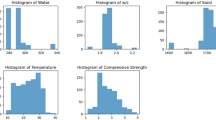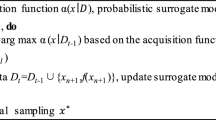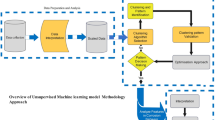Abstract
Effective prediction of sinter chemical composition enables more timely capture of production abnormalities and reduces the time for process parameters correction, thus optimizing sintering as well as blast furnace production. In this study, two ensemble algorithms, Random Forest and XGBoost, are used to model and predict the sinter chemical composition. The prediction results show that both ensemble algorithms are able to achieve small Mean Square Error (MSE) and Mean Absolute Error (MAE) values with the chemical composition of the raw materials as training parameters, and except for FeO, the prediction hit rate of all other components was above 85%. There is almost no significant difference between the prediction results of the two ensemble algorithms. With the addition of sintering process parameters and fuel/flux parameters as training parameters, reductions in MAE and MSE as well as increases in prediction hit rate were achieved for each chemical composition. Finally, the trained Random Forest model with chemical composition combined with process parameters or fuel/flux parameters achieved prediction hit rate of 94.45%, 83.39%, 95.29%, 89.44%, 90.96%, 97.72%, 99.39%, and 90.35% for Fe, FeO, CaO, SiO2, Al2O3, basicity, MgO, and P, respectively.
Graphical Abstract







Similar content being viewed by others
References
Wang Y, Zuo H, Zhao J (2020) Recent progress and development of ironmaking in China as of 2019: an overview. Ironmak Steelmak 47:640–649. https://doi.org/10.1080/03019233.2020.1794471
Yi Z, Liu Q, Shao H (2021) Effect of MgO on highly basic sinters with high Al2O3. Min Metall Explor 38:2175–2183. https://doi.org/10.1007/s42461-021-00445-4
Wang W, Yang D, Ou-Yang Z et al (2019) Effect of SiO2 on the formation of acicular calcium ferrite in sinter. Metall Mater Trans B 50:678–687. https://doi.org/10.1007/s11663-019-01528-w
Webster NAS, Pownceby MI, Pattel R et al (2019) Fundamentals of silico-ferrite of calcium and aluminium (SFCA) iron ore sinter bonding phase formation: effects of basicity and magnesium on crystallisation during cooling. ISIJ Int 59:263–267. https://doi.org/10.2355/isijinternational.ISIJINT-2018-573
Jia R, Deng L, Yun F et al (2019) Effects of SiO2/CaO ratio on viscosity, structure, and mechanical properties of blast furnace slag glass ceramics. Mater Chem Phys 233:155–162. https://doi.org/10.1016/j.matchemphys.2019.05.065
Ohno K, Maeda T, Kunitomo K, Hara M (2022) Effect of FeO concentration in sinter iron ore on reduction behavior in a hydrogen-enriched blast furnace. Int J Miner Metall Mater 29:1820–1829. https://doi.org/10.1007/s12613-022-2480-x
Jiao L, Kuang S, Liu L et al (2021) CFD Modeling and analysis of particle size reduction and its effect on blast furnace ironmaking. Metall Mater Trans B 52:138–155. https://doi.org/10.1007/s11663-020-02001-9
Jordan MI, Mitchell TM (2015) Machine learning: trends, perspectives, and prospects. Science 349:255–260. https://doi.org/10.1126/science.aaa8415
Jiang D, Zhang J, Wang Z et al (2020) A Prediction model of blast furnace slag viscosity based on principal component analysis and K-nearest neighbor regression. JOM 72:3908–3916. https://doi.org/10.1007/s11837-020-04360-9
Jiang D, Wang Z, Zhang J et al (2022) Predictive modelling for contact angle of liquid metals and oxide ceramics by comparing gaussian process regression with other machine learning methods. Ceram Int 48:665–673. https://doi.org/10.1016/j.ceramint.2021.09.146
Jiang D, Zhou X, Wang Z et al (2022) Predictive modeling of the hot metal silicon content in blast furnace based on ensemble method. Metall Res Technol 119:515. https://doi.org/10.1051/metal/2022074
Jiang D, Wang Z, Zhang J et al (2022) Machine learning modeling of gas utilization rate in blast furnace. JOM 74:1633–1640. https://doi.org/10.1007/s11837-022-05166-7
Liu Y, Zhang H, Shen Y (2022) A data-driven approach for the quick prediction of in-furnace phenomena of pulverized coal combustion in an ironmaking blast furnace. Chem Eng Sci 260:117945. https://doi.org/10.1016/j.ces.2022.117945
Lughofer E, Pollak R, Feilmayr C et al (2021) Prediction and explanation models for hot metal temperature, silicon concentration, and cooling capacity in ironmaking blast furnaces. Steel Res Int 92:2100078. https://doi.org/10.1002/srin.202100078
Song L, Qing L, Xiaojie L, Yanqin S (2020) Synthetically predicting the quality index of sinter using machine learning model. Ironmak Steelmak 47:828–836. https://doi.org/10.1080/03019233.2019.1617573
Yuan Z, Wang B, Liang K, et al (2018) Application of deep belief network in prediction of secondary chemical components of sinter. In: 2018 13th IEEE Conference on Industrial Electronics and Applications (ICIEA). Pp. 2746–2751
Fan XH, Long HM, Wang Y et al (2006) Application of expert system for controlling sinter chemical composition. Ironmak Steelmak 33:253–255. https://doi.org/10.1179/174328106X94780
Liu S, Liu X, Lyu Q, Li F (2020) Comprehensive system based on a DNN and LSTM for predicting sinter composition. Appl Soft Comput 95:106574. https://doi.org/10.1016/j.asoc.2020.106574
Dong X, Yu Z, Cao W et al (2020) A survey on ensemble learning. Front Comput Sci 14:241–258. https://doi.org/10.1007/s11704-019-8208-z
Wang X, Hu T, Tang L (2022) A Multiobjective evolutionary nonlinear ensemble learning with evolutionary feature selection for silicon prediction in blast furnace. IEEE Trans Neural Netw Learn Syst 33:2080–2093. https://doi.org/10.1109/TNNLS.2021.3059784
Luo S, Dai Z, Chen T et al (2020) A weighted SVM ensemble predictor based on AdaBoost for blast furnace Ironmaking process. Appl Intell 50:1997–2008. https://doi.org/10.1007/s10489-020-01662-y
Luo S, Chen T (2020) Two derivative algorithms of gradient boosting decision tree for silicon content in blast furnace system prediction. IEEE Access 8:196112–196122. https://doi.org/10.1109/ACCESS.2020.3034566
Ma W, Li Q, Li J et al (2021) A method for weighing broiler chickens using improved amplitude-limiting filtering algorithm and BP neural networks. Inf Process Agric 8:299–309. https://doi.org/10.1016/j.inpa.2020.07.001
Breiman L (2001) Random Forests. Mach Learn 45:5–32. https://doi.org/10.1023/A:1010933404324
Manojlović V, Kamberović Ž, Korać M, Dotlić M (2022) Machine learning analysis of electric arc furnace process for the evaluation of energy efficiency parameters. Appl Energy 307:118209. https://doi.org/10.1016/j.apenergy.2021.118209
Acknowledgements
This work was supported by the [National Natural Science Foundation of China, 52204335], the [Beijing New-star Plan of Science and Technology, Z211100002121115], the [Central Universities Foundation of China, 06500170], the [Guangdong Basic & Applied Basic Research Fund Joint Regional Funds-Youth Foundation Projects, 2020A1515111008] and the [China Postdoctoral Science Foundation, 2021M690369].
Author information
Authors and Affiliations
Contributions
Conceptualization: JZ and YW; Data collection and processing: JW and LN; Algorithms: YW, QS and LN; Writing (original draft preparation): LN; Writing (review and editing): JS and ZL; Supervision: ZL and JS.
Corresponding author
Ethics declarations
Conflict of interest
On behalf of all authors, the corresponding author states that there is no confict of interest.
Additional information
The contributing editor for this article was Il Sohn.
Publisher's Note
Springer Nature remains neutral with regard to jurisdictional claims in published maps and institutional affiliations.
Rights and permissions
Springer Nature or its licensor (e.g. a society or other partner) holds exclusive rights to this article under a publishing agreement with the author(s) or other rightsholder(s); author self-archiving of the accepted manuscript version of this article is solely governed by the terms of such publishing agreement and applicable law.
About this article
Cite this article
Niu, L., Liu, Z., Zhang, J. et al. Prediction of Sinter Chemical Composition Based on Ensemble Learning Algorithms. J. Sustain. Metall. 9, 1168–1179 (2023). https://doi.org/10.1007/s40831-023-00717-x
Received:
Accepted:
Published:
Issue Date:
DOI: https://doi.org/10.1007/s40831-023-00717-x




